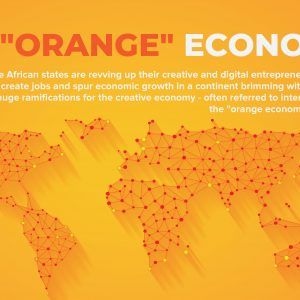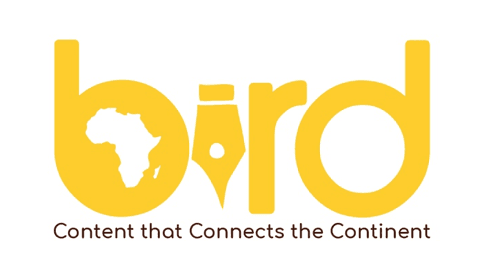A huge entertainment sector, rapid tech adoption, and diverse cultural traditions of a billion-plus people form a strong backbone for Africa’s creative capital as cultural and creative industries (CCIs) take a more central role in the continent’s economic architecture, reports on Africa's creative, or orange economy, suggest.
Seth Onyango, bird story agency
More African states are revving up their creative and digital entrepreneurship space to create jobs and spur economic growth in a continent brimming with talent. This has huge ramifications for the creative economy, often referred to internationally as the "orange economy" in Africa. This includes all the sectors whose goods and services are based on intellectual property.
A spot check by bird shows nearly all states have set in motion policies to ratchet up the sub-sectors of Africa’s CCIs, made up of music, publishing, advertising, performing arts, fine art, television, and radio.
Others are interior design, game development, architecture, visual communication design, fashion, movies, animation, video, photography, crafts, and culinary arts.
Already, the creative renaissance is happening in the continent’s biggest economy, Nigeria, where the sector is primed to produce more than a 2.7million jobs by 2025, according to the Mastercard Foundation.
That is way more than the number of people employed in Nigeria’s oil and gas sector, with 65,000 direct jobs and about 250,000 jobs in non-direct employment.
In the forecast period, the industry will plug more than 12 billion US dollars into the West African state’s GDP.
Across the continent, government policy has shifted towards the creative sector as a panacea for unemployment, as the governments look to tap into Africa’s biggest asset: the youth.
Kenya, South Africa, Nigeria other African states have ministries of ICT, Innovation and Sport or Youth Affairs.
This comes on the back of several reports highlighting the economic potential of CCIs in Africa, where the entertainment industries have made global inroads.
It is no longer uncommon to find revellers across the world, from the U.S to France, UAE and Germany, dancing to Afrobeats and other African tunes—one of the continent's major "soft" exports.
For instance, in September 2021, the Afrobeat track ‘Love Nwantiti’ by the Nigerian singer Ckay was the most ‘Shazamed’ song on the music identifying app, Shazam, globally.
Further highlighting the coming of age of African entertainment are music collaborations featuring African artists and world-renowned artists.
Pop superstars like Beyonce, Shakira, and recently Ed Sheeran—whose hit song Peru with Fireboy DML has massed over 42 million views on YouTube since its release on December 24, 2021—are increasingly teaming up with African counterparts.
Policy Circle (PC) figures show the creative economy contributes just over 6.1 per cent to global GDP, averaging between 2 per cent and 7 per cent of national GDPs.
According to UN estimates, the industry generates annual revenues of 2.25 trillion US dollars and accounts for 30 million jobs worldwide.
Notably, nearly half of these workers are women, and these industries employ more people ages 15-29 than any other sector.
It further shows that television and the visual arts make up the largest industries of the creative economy in terms of revenue, while visual arts and music are the largest industries in terms of employment.
FDI Intelligence notes that African literature is attaining global recognition, with authors from Tanzania and Senegal winning some of the world's biggest literary accolades — such as the Nobel Prize and Goncourt Awards — in 2021.
Intergovernmental organisations have also recognised the power of Africa’s Cultural and Creative Industries.
The African Union declared 2021 as the year of “Arts, Culture and Heritage: Levers for building the Africa we want” to highlight the “significant contribution culture and the arts can make to socio-economic development, poverty alleviation, job creation and social inclusion”
Last year, UNESCO Director-General Audrey Azoulay, alongside distinguished film-makers Abderrahmane Sissako and Mati Diop, presented The African Film Industry publication, the first-ever complete mapping of the continent’s film and audiovisual industries.
The industry currently, employs an estimated 5 million people and accounts for 5 billion US dollars in GDP across Africa.
UNESCO forecasts the film industry alone to create over 20 million jobs and contribute 20 billion US dollars to the continent’s combined GDP in just a few years.
Its figures show that the value of the global market for creative goods more than doubled from 208 billion US dollars in 2002 to 509 billion US dollars in 2015.
“It is among the most rapidly growing sectors of the world economy, generating nearly 30 million jobs worldwide and employing more people aged 15−29 than any other sector. While the precise nature and scope of the Cultural and Creative Industries can vary from one country to the next, they are recognized by the member states as a veritable engine for economic development and increasingly supported by international development partners,” it reads in part.
Time to get colourful.
Also read: June Gachui on Creating a Sustainable Career From Your Interests and Talents
bird story agency





